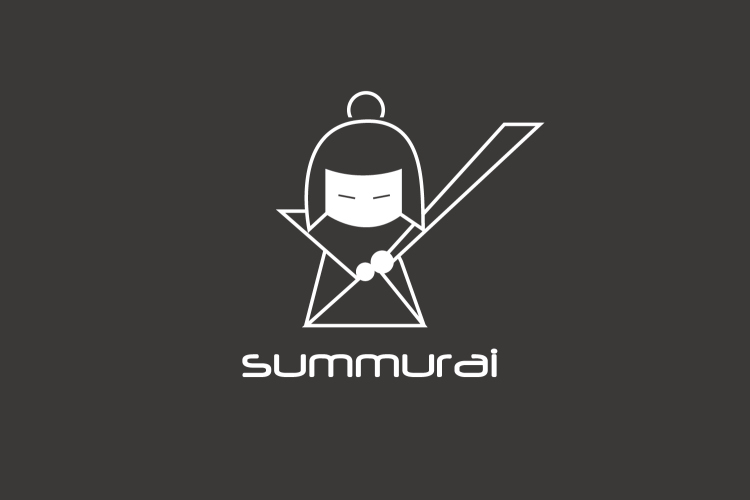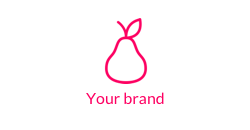Suite video1
We do not know much more exciting things than you chose to trust us! Now we just have to leave you with everything that is hot and interesting.
Thanks a lot. We'll get back to you soon.

Our site uses cookies technology for functional purposes and the study of usage characteristics. The use of the Site constitutes acceptance of the Terms of Use and the use of cookies.



After entering the number, the mobile send button will be available to you in all items.


|
How will your content marketing activity look like with Summurai?
02:51
Rethinking Digital Content with Summurai
http://summur.ai/lFYVY
Rethinking Digital Content with Summurai
Everyone knows that marketing today means creating content. Marketing guru Seth Godin said it best: “Content marketing is the only marketing left.” But it turns out that while every marketing manager creates content, about 70% of them claim that it isn’t working as well as they had hoped. There are many roadblocks on the way to creating quality content that people will be willing to consume. Writing content starts with the understanding that while an organization is good at what they do, they aren’t necessarily good at writing content about what they do, let alone promoting that content online. At this stage, organizations hire content writers and dictate what they should be writing about. The problem is that content writers, who know and love writing, don’t know and love your organization. They are simply forced to write content about it in order to make a living. This content ends up promoted online with clickbait headlines tempting the potential reader but give some credit to your target audience. They will immediately recognize shallow content created for marketing purposes only, as compared to quality content passionately written by knowledgeable professionals out of a true desire to be beneficial. The best online content has been written by experts in their field who are passionate about what they write, and who, for the most part, do not get paid to write it. So, how do you create such content? Well, you don’t create it, you find it. It’s called Curation. Instead of creating your own unique content and trying to make it look presentable, we’re suggesting you go in a different direction. Let’s track down the best online content pertaining to your field and create audio summaries of these articles for your busy customers. Instead of your brand being identified as just another company with a blog, this is your opportunity to turn your brand into the one that tracks down the most interesting and relevant articles on the web, and helps your customers stay up to date with everything that’s happening in the industry with minimum effort. Which brand do you think will be perceived as the most useful? This is your opportunity to create a high-quality content infrastructure using an innovative and precise platform. You can use it to feed in the content yourself or let the Summurai team do everything from you – from tracking down the articles, through to creating the summaries, recording them, and uploading them online. We just need your phone...
After entering the number, the mobile send button will be available to you in all items. Send to mobile
After a short one-time registration, all the articles will be opened to you and we will be able to send you the content directly to the mobile (SMS) with a click.
We sent you!
The option to cancel sending by email and mobile Will be available in the sent email.
|


|
What can audio do in the world of your busy customers?
02:45
Understanding the Opportunity to Add Audio to Your Customers’ Timeline
http://summur.ai/lFYVY
Understanding the Opportunity to Add Audio to Your Customers’ Timeline
In order to truly understand audio, we must understand timelines and the customer journey. A customer journey is the process of drawing a customer’s timeline from start to finish, locating the various interactions the customer has with our organization, and analyzing the characteristics of each of those interactions. Let’s explore some of the insights from the typical customer journey analysis. When you look at timelines from the point of view of the content that you want to make accessible to your target audience, the picture becomes even more complex. Normally, even if your target audience has access to your text or video content, they are too busy for it. You may have written an in-depth, professional article which your customer will encounter during the workday on her desktop, but that is a problematic time given the fact that she is currently too busy working to read it. We leave that tab open and keep these articles for later, but later never comes... However, we can plan the customer’s encounter with our content in the right way. For example, we can place a link on the article webpage to ‘send to my phone’, so that our user can listen to the content at a later time, when she is able to consume audio content, perhaps while doing something else, like being stuck in traffic, cycling home, or walking the dog. In all these situations, there won’t be some digital screen requiring the user’s full attention – she won’t need one to listen to something on her phone. Moving content into audio allows shifting your content to a timeline where your customer is able to consume it. If you decide to do that, we will be happy to help you create a platform that will let you achieve this easily. We just need your phone...
After entering the number, the mobile send button will be available to you in all items. Send to mobile
After a short one-time registration, all the articles will be opened to you and we will be able to send you the content directly to the mobile (SMS) with a click.
We sent you!
The option to cancel sending by email and mobile Will be available in the sent email.
|


|
Why you should look for your brand's tone of voice and how to find it
02:46
Finding Your Tone of Voice
We’ve already mentioned that audio has a competitive advantage in being easy to consume as a secondary activity. But we haven’t discussed another, much more interesting advantage that audio has. Audio content allows you to break the ice and create a warmer, more emotional, and more personal interaction with your customers. When you start out creating your audio content, you’ll soon be asking yourself what kind of voice you want to represent your organization’s message and brand. When we’re no longer using the cold, impersonal tone of printed text, we must choose the right presenter to best convey your brand. Who would you like your customers to meet, and what tone of voice should he or she have? Making content accessible using a friendly human voice is not a gimmick. It simply can’t be done any other way. When you or your customers consume audio content as a secondary activity – say, while driving – most of your cognitive resources must stay focused on the primary activity, and not on deciphering some strange voice. So, if we hear the voice of a robot or very official-sounding narrator, our cognitive system chooses the easy way out and simply filters them away. In order to pass through this listening barrier, the content must be delivered in a down-to-earth manner, in a tone similar to that of a friendly radio host, or the person sitting next to us in our car. Only this type of content will register with us. When you start your journey creating audio content, it’s important to remember not just to read the text, but also to understand how the text can break the ice and come across as a friendly conversation. Try asking yourself who your customers would rather be talking to, and what kind of hat your representative needs to be wearing while recording their narration. This will help you identify the most suitable voice for your brand. Let’s summarize. We just need your phone...
After entering the number, the mobile send button will be available to you in all items. Send to mobile
After a short one-time registration, all the articles will be opened to you and we will be able to send you the content directly to the mobile (SMS) with a click.
We sent you!
The option to cancel sending by email and mobile Will be available in the sent email.
|


|
Why short content has concurred the world and how to connect to this trend?
02:45
Welcome to the Age of Very. Short. Content.
http://summur.ai/lFYVY
Welcome to the Age of Very. Short. Content.
Twitter came out in 2006 and opened the door to a world of brief content by limiting posts to just 140 characters. Vine joined the game in 2012 with videos limited to just six seconds long. Facebook posts with 85 characters or less show up in larger font. Instagram videos are limited to fifteen seconds, while Facebook Stories are limited to twenty. Are you looking for in-depth content? Ted Talks were originally designed to be 18 minutes long, but in recent years, the people over at Ted realized that 18 minutes can feel like an eternity, so they shortened the duration of some of the Ted Talk to just five minutes. Even learning has changed, and terms such as ‘micro-learning’ - bite-sized education over an extended period - have become more acceptable. Generation Y came up with the culture of ‘TL;DR’ – ‘Too long, didn’t read’ – and made it clear that unless we offer brief and precise content, they simply won’t be there at the other end. Let’s have a look at the world of digital books. Once Audible successfully popularized audiobooks at the expense of printed ones, services such as Blinkist and Instaread have popped up offering audiobook summaries, where the main idea of a book is conveyed in under fifteen minutes, to varying degrees of success. The content we at Summurai have chosen is aimed to be just three minutes long. We chose three minutes because this duration offers a fine balance between getting in-depth with the material while focusing on conveying a message, without any superficial fluff getting in the way. Is your message too long? It might be a good idea to split it into two Summies. Like we said, think sushi. But creating brief content that maintains quality is far from easy. Mark Twain once wrote, “I apologize for such a long letter - I didn't have time to write a short one.” We just need your phone...
After entering the number, the mobile send button will be available to you in all items. Send to mobile
After a short one-time registration, all the articles will be opened to you and we will be able to send you the content directly to the mobile (SMS) with a click.
We sent you!
The option to cancel sending by email and mobile Will be available in the sent email.
|


|
How to create high-quality content and stand out in a world of too much information?
03:16
How Do We Measure Content Quality?
In an age of information overload, when so much content is thrown at your customers from so many directions, quality content is the deciding factor. Most organizations realize today that only truly quality content, created with the intention of adding value, can help build enduring brand loyalty. So, how do we make sure that the content we’re producing truly is valuable to our customers? Since we come from the world of user experience design, we can use an established model from our field for this purpose. A few years ago, a researcher by the name B.J. Fogg from Stanford University created a model that evaluates our capacity to influence the behavior of our users or customers. The basic assumption of the model is that when the customer encounters your content and decides whether to consume it or not, their decision will depend on a combination of two parameters – motivation and ability. The motivation scale deals with the simple question of whether the content we are offering is of any value or benefit to the customer. The headline hinting to what our content is about, together with the attached photo, will determine the user’s decision whether to click on the link to our content or ignore it. That’s why convincing headlines that promise value work so well, even if the actual content does not always live up to our expectation. The second scale we measure is ability, that is, how hard or easy it will be to consume the content. Once the customer has reached the actual content – say a printed article – they will have to decide whether to start reading it. People have a real and proven difficulty reading texts, so the average time dedicated to reading a blog post is just 37 seconds, which, between you and me, is not enough to read anything. When we started out with Summurai, we created a scale to measure global content quality. We called it V.E.R. – Value/Effort Rate – meaning, the rate between the effort invested and the value gained from the content. We have found that nowadays, most texts we encounter leave us feeling like they were simply not worth the effort we put into reading them. Even with podcasts, there is often a huge gap between the length of a podcast and the value we got from listening to it. Summies, our audio summaries, offer the highest value to effort ratio available in the digital world. Three minutes of content carefully diluted and edited in order to offer the most value, presented in an audio format requiring hardly any effort to consume, and accessible at the times that the users are most available to learn more. We also add in the full script of each Summy in text format, giving the users another way to choose to access our content. We just need your phone...
After entering the number, the mobile send button will be available to you in all items. Send to mobile
After a short one-time registration, all the articles will be opened to you and we will be able to send you the content directly to the mobile (SMS) with a click.
We sent you!
The option to cancel sending by email and mobile Will be available in the sent email.
|


|
What is a Summy and why this is the most interesting piece of content for your brand?
03:46
Meet the Summy - the Most Relevant Content Format You Have Ever Met
http://summur.ai/lFYVY
Meet the Summy - the Most Relevant Content Format You Have Ever Met
We live in an age of endless information overload. On the one hand, we all have a real need to know a lot more about more topics, but then again, the amount of global content is increasing at an astounding rate, while the quality of content is steadily deteriorating. And how are we ever going to manage reading everything that we find interesting with the little time we have available, anyway? The role of the Summurai team – our curators, writers, voice artists and editors – is twofold. Firstly, they ensure that bad content does not make its way to the designated audience. Secondly, they identify the quality content and chop it up into small and precise pieces of content, which will convey all that is needed to know in the most accurate and minimalist way possible. We have created a new unit of content which we call a Summy. The Summy is the sushi of the content world. It is small, accurate, and super effective. It’s composed of around 300 to 400 words, and is served up as audio and text, making it easily consumable at any time. A Summy can be a short piece of content, or a summary of an academic treatise, article, blog post, video, podcast, or online lecture. You can create your own Summies, or you can get our Summurai team to create them for you. Our Summurai team can write standalone Summies or locate the best articles and online content, summarize them, and voice-record them. In the age of machine learning and algorithms vying to replace humans, we are on the side of humanity. So all this is done by our team – not by machines. The summaries are written only by people with knowledge in field and an understanding of the article’s topic. We pack the Summies into SummyBoards – content playlists in various topics. A SummyBoard can be a closed playlist or one that is regularly updated. It can be open to the general public or require registration, and its content can be free or paid. This content board is “webby”, meaning that it’s available as an online link, without the need to install an app, or any other barrier standing in the way. You can send links to a full playlist of Summies or to a single Summy. The SummyBoard is a white label – it will take on your logo and branding and become another content channel in your relationship with your target audience. You can either host this content channel with us or place it under your own domain. SummyBoards and Summies are created using Dojo – a super-advanced management system of our own creation, which we just love. Dojo lets you create Summies and monitor their performance with statistics that show you what works and what can be improved upon. You can also add call to action buttons to your Summies – a link to a purchase page, a phone contact, or navigation to a physical location using a mobile phone. Summurai playlists are a new means of giving busy audience access to your content. They can form part of the sales process, accompany your user experience processes, provide an alternate platform for your blog or online content marketing, or they can even be used as a means of communication for your team, to keep them updated on what they need to know. We’ll elaborate on these cases over the next few Summies. We just need your phone...
After entering the number, the mobile send button will be available to you in all items. Send to mobile
After a short one-time registration, all the articles will be opened to you and we will be able to send you the content directly to the mobile (SMS) with a click.
We sent you!
The option to cancel sending by email and mobile Will be available in the sent email.
|


How will your content marketing activity look like with Summurai?
Everyone knows that marketing today means creating content. Marketing guru Seth Godin said it best: “Content marketing is the only marketing left.” But it turns out that while every marketing manager creates content, about 70% of them claim that it isn’t working as well as they had hoped. There are many roadblocks on the way to creating quality content that people will be willing to consume.
Writing content starts with the understanding that while an organization is good at what they do, they aren’t necessarily good at writing content about what they do, let alone promoting that content online. At this stage, organizations hire content writers and dictate what they should be writing about. The problem is that content writers, who know and love writing, don’t know and love your organization. They are simply forced to write content about it in order to make a living.
This content ends up promoted online with clickbait headlines tempting the potential reader but give some credit to your target audience. They will immediately recognize shallow content created for marketing purposes only, as compared to quality content passionately written by knowledgeable professionals out of a true desire to be beneficial. The best online content has been written by experts in their field who are passionate about what they write, and who, for the most part, do not get paid to write it. So, how do you create such content? Well, you don’t create it, you find it.
It’s called Curation. Instead of creating your own unique content and trying to make it look presentable, we’re suggesting you go in a different direction. Let’s track down the best online content pertaining to your field and create audio summaries of these articles for your busy customers. Instead of your brand being identified as just another company with a blog, this is your opportunity to turn your brand into the one that tracks down the most interesting and relevant articles on the web, and helps your customers stay up to date with everything that’s happening in the industry with minimum effort. Which brand do you think will be perceived as the most useful?
This is your opportunity to create a high-quality content infrastructure using an innovative and precise platform. You can use it to feed in the content yourself or let the Summurai team do everything from you – from tracking down the articles, through to creating the summaries, recording them, and uploading them online.
After entering the number, the mobile send button will be available to you in all items.


What can audio do in the world of your busy customers?
In order to truly understand audio, we must understand timelines and the customer journey. A customer journey is the process of drawing a customer’s timeline from start to finish, locating the various interactions the customer has with our organization, and analyzing the characteristics of each of those interactions.
Let’s explore some of the insights from the typical customer journey analysis.
It turns out that a digital encounter via a desktop or laptop is very different from one the smartphone. The customer uses each device in a unique way. On each device, she will have a different reason for interacting with our organization, a different timeframe, a different way of usage method, a different context for using it, etc. Since each of these encounters is unique, it’s best to create a separate interface for each platform already at the design stage instead of copy-pasting your desktop interface to appear the same on smartphones.
When you look at timelines from the point of view of the content that you want to make accessible to your target audience, the picture becomes even more complex. Normally, even if your target audience has access to your text or video content, they are too busy for it. You may have written an in-depth, professional article which your customer will encounter during the workday on her desktop, but that is a problematic time given the fact that she is currently too busy working to read it. We leave that tab open and keep these articles for later, but later never comes...
However, we can plan the customer’s encounter with our content in the right way. For example, we can place a link on the article webpage to ‘send to my phone’, so that our user can listen to the content at a later time, when she is able to consume audio content, perhaps while doing something else, like being stuck in traffic, cycling home, or walking the dog. In all these situations, there won’t be some digital screen requiring the user’s full attention – she won’t need one to listen to something on her phone.
Moving content into audio allows shifting your content to a timeline where your customer is able to consume it. If you decide to do that, we will be happy to help you create a platform that will let you achieve this easily.
After entering the number, the mobile send button will be available to you in all items.


Why you should look for your brand's tone of voice and how to find it
We’ve already mentioned that audio has a competitive advantage in being easy to consume as a secondary activity. But we haven’t discussed another, much more interesting advantage that audio has. Audio content allows you to break the ice and create a warmer, more emotional, and more personal interaction with your customers. When you start out creating your audio content, you’ll soon be asking yourself what kind of voice you want to represent your organization’s message and brand. When we’re no longer using the cold, impersonal tone of printed text, we must choose the right presenter to best convey your brand.
Who would you like your customers to meet, and what tone of voice should he or she have?
Making content accessible using a friendly human voice is not a gimmick. It simply can’t be done any other way. When you or your customers consume audio content as a secondary activity – say, while driving – most of your cognitive resources must stay focused on the primary activity, and not on deciphering some strange voice. So, if we hear the voice of a robot or very official-sounding narrator, our cognitive system chooses the easy way out and simply filters them away. In order to pass through this listening barrier, the content must be delivered in a down-to-earth manner, in a tone similar to that of a friendly radio host, or the person sitting next to us in our car. Only this type of content will register with us.
When you start your journey creating audio content, it’s important to remember not just to read the text, but also to understand how the text can break the ice and come across as a friendly conversation. Try asking yourself who your customers would rather be talking to, and what kind of hat your representative needs to be wearing while recording their narration. This will help you identify the most suitable voice for your brand.
Let’s summarize.
If you’ve come this far, you have gotten to know Summurai personally. You know who we are and what we can do, and you have experienced our Summies for yourself. Now you are ready to offer this new communication channel to your customers. We’ll be thrilled to help create this new content format for you and make it accessible using the tools of Summurai.
After entering the number, the mobile send button will be available to you in all items.


Why short content has concurred the world and how to connect to this trend?
Twitter came out in 2006 and opened the door to a world of brief content by limiting posts to just 140 characters. Vine joined the game in 2012 with videos limited to just six seconds long. Facebook posts with 85 characters or less show up in larger font. Instagram videos are limited to fifteen seconds, while Facebook Stories are limited to twenty.
Are you looking for in-depth content? Ted Talks were originally designed to be 18 minutes long, but in recent years, the people over at Ted realized that 18 minutes can feel like an eternity, so they shortened the duration of some of the Ted Talk to just five minutes.
Even learning has changed, and terms such as ‘micro-learning’ - bite-sized education over an extended period - have become more acceptable.
Generation Y came up with the culture of ‘TL;DR’ – ‘Too long, didn’t read’ – and made it clear that unless we offer brief and precise content, they simply won’t be there at the other end.
Let’s have a look at the world of digital books. Once Audible successfully popularized audiobooks at the expense of printed ones, services such as Blinkist and Instaread have popped up offering audiobook summaries, where the main idea of a book is conveyed in under fifteen minutes, to varying degrees of success.
The content we at Summurai have chosen is aimed to be just three minutes long. We chose three minutes because this duration offers a fine balance between getting in-depth with the material while focusing on conveying a message, without any superficial fluff getting in the way. Is your message too long? It might be a good idea to split it into two Summies. Like we said, think sushi.
But creating brief content that maintains quality is far from easy. Mark Twain once wrote, “I apologize for such a long letter - I didn't have time to write a short one.”
Creating brief and focused content is much harder than writing long, arduous texts. But this is precisely what we at Summurai specialize in, and we’ll be happy to create this content for you and allow your brand to be identified with easily digested content that offers great added value.
After entering the number, the mobile send button will be available to you in all items.


How to create high-quality content and stand out in a world of too much information?
In an age of information overload, when so much content is thrown at your customers from so many directions, quality content is the deciding factor. Most organizations realize today that only truly quality content, created with the intention of adding value, can help build enduring brand loyalty.
So, how do we make sure that the content we’re producing truly is valuable to our customers? Since we come from the world of user experience design, we can use an established model from our field for this purpose.
A few years ago, a researcher by the name B.J. Fogg from Stanford University created a model that evaluates our capacity to influence the behavior of our users or customers. The basic assumption of the model is that when the customer encounters your content and decides whether to consume it or not, their decision will depend on a combination of two parameters – motivation and ability.
The motivation scale deals with the simple question of whether the content we are offering is of any value or benefit to the customer. The headline hinting to what our content is about, together with the attached photo, will determine the user’s decision whether to click on the link to our content or ignore it. That’s why convincing headlines that promise value work so well, even if the actual content does not always live up to our expectation.
The second scale we measure is ability, that is, how hard or easy it will be to consume the content. Once the customer has reached the actual content – say a printed article – they will have to decide whether to start reading it. People have a real and proven difficulty reading texts, so the average time dedicated to reading a blog post is just 37 seconds, which, between you and me, is not enough to read anything.
When we started out with Summurai, we created a scale to measure global content quality. We called it V.E.R. – Value/Effort Rate – meaning, the rate between the effort invested and the value gained from the content. We have found that nowadays, most texts we encounter leave us feeling like they were simply not worth the effort we put into reading them. Even with podcasts, there is often a huge gap between the length of a podcast and the value we got from listening to it.
Summies, our audio summaries, offer the highest value to effort ratio available in the digital world. Three minutes of content carefully diluted and edited in order to offer the most value, presented in an audio format requiring hardly any effort to consume, and accessible at the times that the users are most available to learn more. We also add in the full script of each Summy in text format, giving the users another way to choose to access our content.
After entering the number, the mobile send button will be available to you in all items.


What is a Summy and why this is the most interesting piece of content for your brand?
We live in an age of endless information overload. On the one hand, we all have a real need to know a lot more about more topics, but then again, the amount of global content is increasing at an astounding rate, while the quality of content is steadily deteriorating. And how are we ever going to manage reading everything that we find interesting with the little time we have available, anyway?
The role of the Summurai team – our curators, writers, voice artists and editors – is twofold. Firstly, they ensure that bad content does not make its way to the designated audience. Secondly, they identify the quality content and chop it up into small and precise pieces of content, which will convey all that is needed to know in the most accurate and minimalist way possible.
We have created a new unit of content which we call a Summy. The Summy is the sushi of the content world. It is small, accurate, and super effective. It’s composed of around 300 to 400 words, and is served up as audio and text, making it easily consumable at any time. A Summy can be a short piece of content, or a summary of an academic treatise, article, blog post, video, podcast, or online lecture. You can create your own Summies, or you can get our Summurai team to create them for you.
Our Summurai team can write standalone Summies or locate the best articles and online content, summarize them, and voice-record them.
In the age of machine learning and algorithms vying to replace humans, we are on the side of humanity. So all this is done by our team – not by machines. The summaries are written only by people with knowledge in field and an understanding of the article’s topic.
We pack the Summies into SummyBoards – content playlists in various topics. A SummyBoard can be a closed playlist or one that is regularly updated. It can be open to the general public or require registration, and its content can be free or paid.
This content board is “webby”, meaning that it’s available as an online link, without the need to install an app, or any other barrier standing in the way. You can send links to a full playlist of Summies or to a single Summy.
The SummyBoard is a white label – it will take on your logo and branding and become another content channel in your relationship with your target audience. You can either host this content channel with us or place it under your own domain.
SummyBoards and Summies are created using Dojo – a super-advanced management system of our own creation, which we just love. Dojo lets you create Summies and monitor their performance with statistics that show you what works and what can be improved upon. You can also add call to action buttons to your Summies – a link to a purchase page, a phone contact, or navigation to a physical location using a mobile phone.
Summurai playlists are a new means of giving busy audience access to your content. They can form part of the sales process, accompany your user experience processes, provide an alternate platform for your blog or online content marketing, or they can even be used as a means of communication for your team, to keep them updated on what they need to know. We’ll elaborate on these cases over the next few Summies.
After entering the number, the mobile send button will be available to you in all items.

The audio-visual interface is new for us as well. We'd love to hear your thoughts.
We are happy to learn and improve for you.
